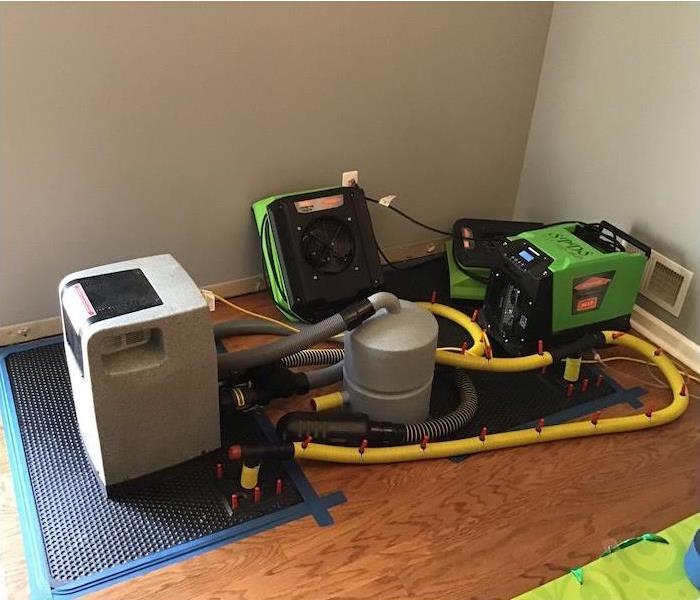Technical Restoration by SERVPRO in Dover Homes with Water Damage
9/14/2022 (Permalink)
 Water damage can leave your Dover property with many issues. Trust our experts to make it "Like it never even happened."
Water damage can leave your Dover property with many issues. Trust our experts to make it "Like it never even happened."
Why Are Certain Actions Necessary in Dover Homes Undergoing Water Restoration?
Restoring your Dover property after water intrusion can seem challenging or straightforward, depending on your perspective of water-triggered changes. Actions such as extracting stagnant water or wiping wet areas are standard. However, the importance of something like blowing air over wet contents as part of addressing water damage may confound you. Knowing the technical processes that facilitate drying makes it easier to understand which actions are vital.
Whether you want to work on your own or involve a Dover water damage professional to handle the problem for you, having the correct information is essential. At the very least, it can help you manage your expectations and limit the chances of conflict with the people working for you. SERVPRO crew chiefs spare time to explain the processes we intend to utilize in your home and their importance in combating the loss.
Crucial things to know include:
- Water readily changes form
- A material can have several unique properties
- Moisture is constantly moving
Water intrusion can originate from any section of a house, whether it is an opening in the roof, a pipe under a sink, or an overflowing appliance in the kitchen. Conventional wisdom would indicate the problem is restricted to the areas where you notice physical wetness. However, water damage can occur in any section of your house following such an incident, even if it is far from the leak point. Such unexpected outcomes develop because water quickly changes form after it spills. Evaporation and condensation can transfer a problem to the ceiling when it starts from the floor. Moisture also moves constantly, especially by wicking through materials or gravity flow.
Technical Implications of the Moisture Changes
Controlling or limiting moisture movement is essential for successful drying. For instance, when restoring assemblies such as walls or ceilings, regulating the conditions at the top and bottom of the assembly helps ensure uniform drying. If you concentrate only on one side, you can run into roadblocks, or other advanced issues can arise. For instance, moisture from the wet concealed areas replenishes the dried spots. Materials like floorboards can also cup when moisture levels at the bottom are higher than at the surface.
Drying Requirements
- Humidity control
- Airflow
- Temperature control
Managing the conditions that facilitate drying is challenging, especially in vast or concealed areas. Our SERVPRO technicians take different actions to ease the process during water restoration. Creating access points to reach covered areas is one such step. Therefore, do not be surprised when our technicians punch holes at the base of the wall. Such holes provide a perfect access point to increase the airflow within the concealed area for sustained drying. Our crews can set up drying chambers for better humidity control when drying big rooms.
Heating is one of the straightforward actions people expect to facilitate the drying of wet items. However, you might have the wrong idea of how the heat eliminates wetness since it works indirectly by increasing the capacity of surrounding air to hold more moisture. Therefore, more water escapes from the materials into the air. If the moisture-rich air is cooled, the vapor quickly condenses and can wet the dried materials again. Heat also helps improve the vapor transfer rate from the core of semi-porous materials toward the surface. Our SERVPRO crews can use portable heaters, indirect-fired furnaces, or AC systems to regulate the temperature in water-damaged areas.
SERVPRO of Dover / Stillwater views any case of water damage from a technical perspective, thus adopting the right approach to resolve it "Like it never even happened." Call us at (973) 810-2825.






 24/7 Emergency Service
24/7 Emergency Service